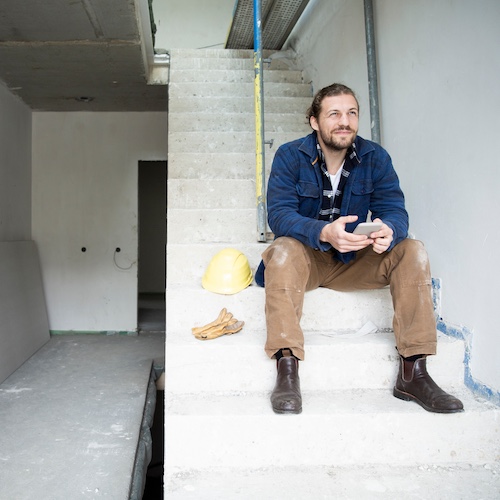VA cash-out refinance: What it is and how it works
Contributed by Sarah Henseler
Sep 26, 2025
•10-minute read

If you currently have a Department of Veterans Affairs (VA) mortgage loan, you’ve got perhaps the most generous form of home financing available: a loan with a low interest rate that requires no down payment or mortgage insurance. But what if you want to reset this loan and you need extra cash?
Thankfully, you can pursue a VA cash-out refinance loan. This handy option lets you tap your home equity, helping you pay for home renovations, consolidate debt, or just have some extra dollars on hand. Even better, your existing mortgage doesn’t need to be a VA-backed loan, so long as you qualify for a VA cash-out refi. And you aren’t required to take cash out at closing if you don’t want to.
Eager to learn more? This helpful article will explain what a VA cash-out refinance is and how it works, who qualifies, the steps involved with applying, the pros and cons of this strategy, the expenses involved, alternatives to consider, and more.
What is a VA cash-out refinance?
A VA cash-out refinance allows eligible veterans, active-duty servicemembers, and certain surviving spouses to get a loan for up to 100% of the appraised value of their home. Loans obtained with the VA program can be used to:
- Make home improvements
- Pay off liens and debts
- Fund education expenses
- Refinance a non-VA loan into a VA loan, which often comes with better terms than a conventional loan
In a nutshell, a VA cash-out refinance loan allows you to replace your current mortgage with a government-backed VA loan or transfer home equity into cash. You can then apply this cash toward paying off other expenses.
“The new VA-backed loan is larger than the amount you currently owe. The new balance pays off the old mortgage and hands you the difference in cash,” says personal finance expert and CPA Andrew Gosselin.
How does a VA cash-out refinance work?
VA loans are backed by the federal government: specifically, the Department of Veterans Affairs. These and other government loans are less risky overall to participating lenders. In other words, eligible borrowers can access financing under more favorable loan terms. For example, VA cash-out refinance rates are typically lower than interest rates for other types of refis.
The good news is that, whether or not you currently have a VA loan, you can refinance your existing mortgage to a new cash-out VA loan. This allows you to access liquidated equity from your home, potentially up to 100% of your home’s value. But you must meet both VA service guidelines and lender-specific requirements, which could include credit score and debt-to-income ratio restrictions.
“This is a powerful financial tool, but also a time-consuming one that demands a precise long-term strategy,” says Dennis Shirshikov, a professor of finance and economics at City University of New York/Queens College.
How do you apply for a VA cash-out refinance?
You could breathe easier because the process of applying for a VA cash-out loan is similar to that of applying for a conventional loan. This typically involves the following steps:
- Meet eligibility requirements. That means you must be an active-duty service member, a veteran with an honorable discharge, or a surviving spouse (with some exceptions).
- Research VA lenders. Try to compare offers among several different lenders to find the best cash-out refi loan deal.
- Review loan conditions. Thankfully, the VA cash-out refinance process allows applicants to refinance mortgages of various types into a new VA loan – even if you choose not to receive cash at closing. But keep in mind that a VA cash-out refinance can only be used on your primary residence, not on investment properties or second homes.
- Select a financial institution to work with after reviewing loan offers and rates/terms carefully.
- Submit a loan application online or in person.
- Await an underwriting decision.
- Close on your approved loan. Note that the VA’s funding fee and other closing costs can be rolled into your loan – which is a unique cost consideration when refinancing with a VA mortgage.
Who is eligible for a VA cash-out refinance?
Again, not everyone can qualify for this refinance opportunity. You have to be a current active-duty service member, veteran, or qualifying surviving spouse.
If you check one of those boxes, you don’t need to have an existing VA loan to access the program. Regardless of the type of mortgage you have in place – whether it’s a 15-year or 30-year fixed-rate conventional, FHA, or USDA loan or an adjustable-rate mortgage (ARM) – it’s possible to access funding for a VA cash-out loan.
Here’s a breakdown of eligibility rules.
Service requirements
To satisfy the minimum requirements necessary to obtain a VA loan, you must:
- Have served on active military service duty for a minimum of 24 continuous months or been mobilized for 90 days
- Be mobilized before August 1, 1990, for at least 181 continuous days
- Provide 6 years of creditable service in the Reserves or National Guard, or at least 90 days under Title 10 or Title 32, with at least 30 days being consecutive
- Be the spouse of a service member who died in the line of duty
Fortunately, service time requirements can be waived if you were medically discharged.
Certificate of eligibility
Want to unlock access to VA loan benefits? You’ll need to furnish your lender with a copy of a Department of Veterans Affairs Certificate of Eligibility (COE). This document confirms that you meet the minimum requirements to qualify for the loan. If you are a veteran or non-active-duty service member, you must have been discharged under honorable conditions.
Lender requirements
To convert the total amount of your home equity into cash, you’ll need to meet the individual lenders’ minimum credit score requirements and standards for the debt-to-income ratio (DTI). In addition, the home that you’re refinancing must be your primary residence.
“Credit-wise, most lenders want a 620 or higher credit score, although I’ve seen some who will go down to 580 if you have solid income and assets. The better your score, the better your interest rate,” says personal finance expert Andrew Lokenauth. “Also, an appraisal is always required for a VA cash-out refinance with no exceptions.”
To convert your total home equity into cash with Rocket Mortgage® you must have a minimum credit score of 620. If your credit score is 580, you can only cash out 90% of your home's equity.
Pros and cons of a VA cash-out refinance
Let’s drill down further into the benefits and drawbacks of VA cash-out refinancing.
Pros
- Interest rates are often lower than what conventional refinances charge. That’s because VA loans are considered less risky by lenders.
- You can use the funds as you see fit for any legal purpose.
- It’s a solid way to consolidate high-interest debt charged by credit cards or other accounts.
- It allows you to access a significant portion of your home equity – often up to 100% – which is more lenient than the conventional cash-out refinance standard of 80%.
- Unlike other VA refinancing options, a VA cash-out refi can be pursued whether or not your existing mortgage is a VA loan.
- No private mortgage insurance (PMI) required. “Even if you lack a 20% equity stake in your property, you don’t have to pay PMI with VA loans,” says Shirshikov.
Cons
- You’ll have to pay a funding fee that equates to 2.15% of the loan amount if you are a first-time user of the VA loan benefit, and 3.3% if you have used it before. This fee can be paid upfront or included in the loan amount. This can be paid upfront at closing or rolled into your loan, adding to the overall cost of your mortgage over its lifespan.
- There are closing costs involved. These can equate to 3% – 5% of your loan amount.
- You may owe more than your home is worth if its value drops after you take cash out.
- Your home must be appraised, which determines the amount of equity that can be accessed and ensures your property meets the VA’s minimum property requirements.
How much does a VA cash-out refinance cost?
The cost of a VA cash-out refinance depends on the amount of your loan and your personal financial profile. Your income, credit history, and numerous other data points factor into the actual cost of the loan.
You‘ll need to pay for closing costs, which include a home appraisal fee and a VA funding fee. This funding fee is 2.15% – 3.3% of the total loan, depending on whether you’ve used a VA-backed loan before and how much of your VA entitlement is currently available. You can either pay the funding fee at closing time or roll it into the loan itself. This fee may be waived if you are a VA disability recipient, a surviving spouse of a veteran who died while in service (or due to a service-related disability), or a Purple Heart recipient serving in an active duty capacity.
Of course, you’ll also have to pay interest. Over the life of the loan, the amount you pay depends on the amount of your loan and your interest rate. Fortunately, VA refinance rates can be lower than rates charged for other refinance loans.
VA cash-out refinance vs. standard cash-out refinance: What’s the difference?
VA cash-out refinances are generally considered less risky by lenders. As a result, rates are typically lower than they are for cash-out refinances on conventional home loans. Be sure to check out today’s refinance rates to get the latest information.
VA cash-out refinance vs. VA streamline refinance: What’s the difference?
A VA cash-out refinance is your only option if you don’t already have a VA loan to refinance into a new VA loan. However, if you already have a VA loan, you may want to consider a VA Streamline refinance or interest rate reduction refinance loan (IRRRL) instead. These offer a simplified means to help you reduce your interest rate or refinance your existing loan with a longer repayment term if you qualify. You can also get a VA Streamline refinance loan (a simplified lending process to help cut time and cost) for up to 120% of the current value of your home.
“The streamline refinance is less paper-intensive and doesn’t need an appraisal. It usually takes less time to close, as well,” says Shirshikov.
However, you aren’t allowed to take cash out with a VA streamline refinance. It’s purely for rate/term refinancing.
Alternative to a VA cash-out refi
Here are a few common alternatives to a VA cash-out refi.
- VA Streamline refinance: As mentioned earlier, this is an alternative for those who already have an existing mortgage with the VA.
- Conventional cash-out refinance: This option might come with a higher interest rate in more stringent requirements. But if you don't qualify for a VA cash-out refinance, this could be your best alternative.
- FHA cash-out refinance: This lets you replace your existing mortgage – whether it’s a VA, conventional, or FHA loan – with a new FHA loan while converting some of your home’s equity into cash. You can usually borrow up to 80% of your home’s current appraised value.
- Home equity loan: A home equity loan also allows you to extract your home’s equity. Typically, you can get a fixed-rate home equity loan that provides a lump sum. The VA, however, does not back home equity loans.
- Home equity line of credit (HELOC): A home equity line of credit works like a credit card, meaning you only repay and pay interest on the amount of the loan that you use.
FAQ
Here are a few questions people often ask about VA loan cash-out refinances.
If I do a VA cash-out refinance, do I have to take out cash?
No, you are not required to take out cash. If you have a preexisting VA mortgage loan and don’t want to take out any cash at closing, a VA Streamline refinance is the quickest and easiest solution. Be sure to compare lenders and offers as you go about the process of researching potential opportunities.
What are the VA cash-out refinance credit score requirements?
This depends on your lender and the amount of lending risk they’re willing to accept, although the VA imposes no minimum credit requirement. Rocket Mortgage accepts applicants with a credit score as low as 580.
Can I do a 100% VA cash-out refinance?
Most mortgage lenders will allow you to refinance up to 100% of your loan-to-value ratio (LTV) in a VA cash-out refinance. However, some will only permit you to borrow a maximum of 90% of your home’s appraised value.
Is an appraisal required for a VA cash-out refinance?
You’ll need a home appraisal if you choose a VA cash-out refi. It’s one of the closing costs of the program. This helps determine your home’s fair market value and how much cash you are allowed to take out, and it also guarantees that your home satisfies VA minimum property standards.
The bottom line: A VA cash-out loan can be a helpful tool
If you’re an active-duty service member, veteran, or qualifying surviving spouse, you can replace your current mortgage – whether it’s a VA, conventional, or other loan – with a new VA-backed loan while accessing up to 100% of your home’s appraised value as cash. These funds can be used for virtually any reason, including home improvements, debt consolidation, or refinancing a non-VA loan into a VA loan with potentially better terms. However, although this option offers competitive rates and flexible uses, you must meet service and lender requirements and carefully weigh the costs, like the VA funding fee and closing expenses.
“A VA cash-out refinance is a powerful tool when used thoughtfully,” says Gosselin. “It brings together a government guarantee, competitive rates, and the flexibility to consolidate debt or fund major expenses. But it demands careful math to ensure the long-term cost makes sense for your household budget.”
Convinced that a VA cash-out refinance is right for you? If so, trust in Rocket Mortgage. Our online mortgage refinance application makes the process much easier than expected.
Rocket Mortgage is a VA-approved lender, not endorsed or sponsored by the Dept. of Veterans Affairs or any government agency.
The VA Streamline program may have stricter requirements in some states. In order to qualify for the VA Streamline program, you must have a VA loan. The VA Streamline is only available on primary residences. Cash-out transactions are not allowed. In order to qualify for a VA Streamline, a 0.5% minimum reduction in interest rate on the previous fixed-rate loan must occur if the new loan will be a fixed rate or a 2% minimum reduction in interest rate on previous adjustable rate mortgage loan must occur; a minimum of 6 months of consecutive mortgage payments must be paid on the current loan at the time of application. Some states may require an appraisal. Additional restrictions/conditions may apply.

Erik J Martin
Erik J. Martin is a Chicagoland-based freelance writer whose articles have been published by US News & World Report, Bankrate, Forbes Advisor, The Motley Fool, AARP The Magazine, USAA, Chicago Tribune, Reader's Digest, and other publications. He writes regularly about personal finance, loans, insurance, home improvement, technology, health care, and entertainment for a variety of clients. His career as a professional writer, editor and blogger spans over 32 years, during which time he's crafted thousands of stories. Erik also hosts a podcast (Cineversary.com) and publishes several blogs, including martinspiration.com and cineversegroup.com.
Related resources

8-minute read
VA renovation loan: How to qualify and apply
A VA home renovation loan lets you bundle your home purchase and renovation costs into a single loan. Find out if you meet the requirements and how to apply....
Read more

6-minute read
How many times can you use a VA loan?
There’s no limit to the number of VA loans qualified borrowers can take out, but you usually can’t hold multiple VA loans at once. Let’s break...
Read more

8-minute read
11 questions to ask when refinancing your mortgage
Thinking about refinancing your mortgage? Get the best refinance for your borrowing needs by asking these questions before making a decision.
Read more